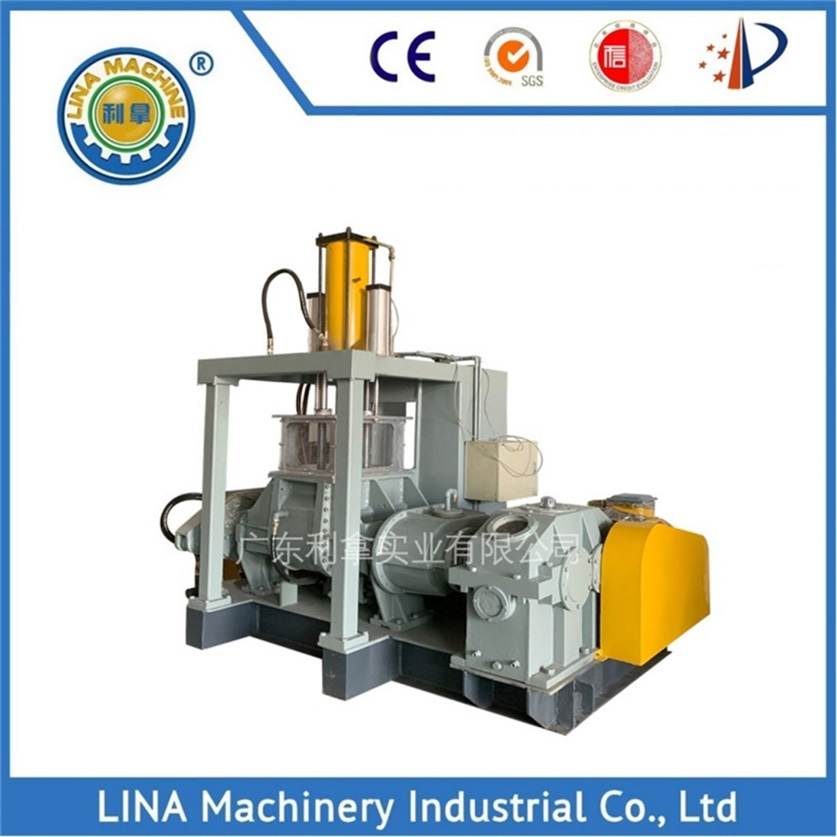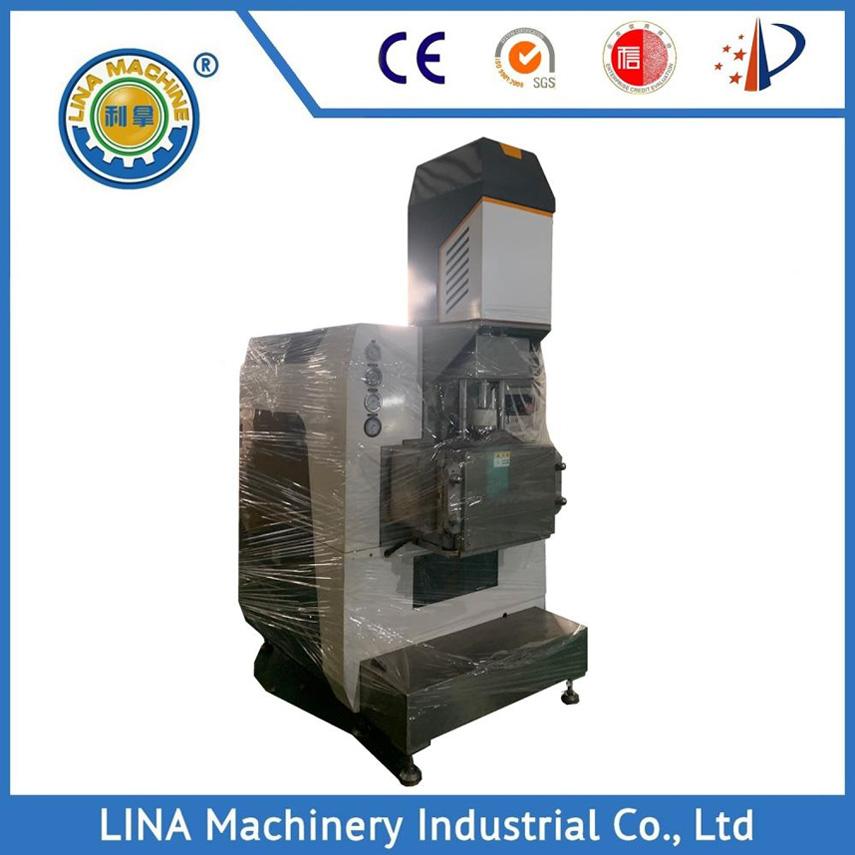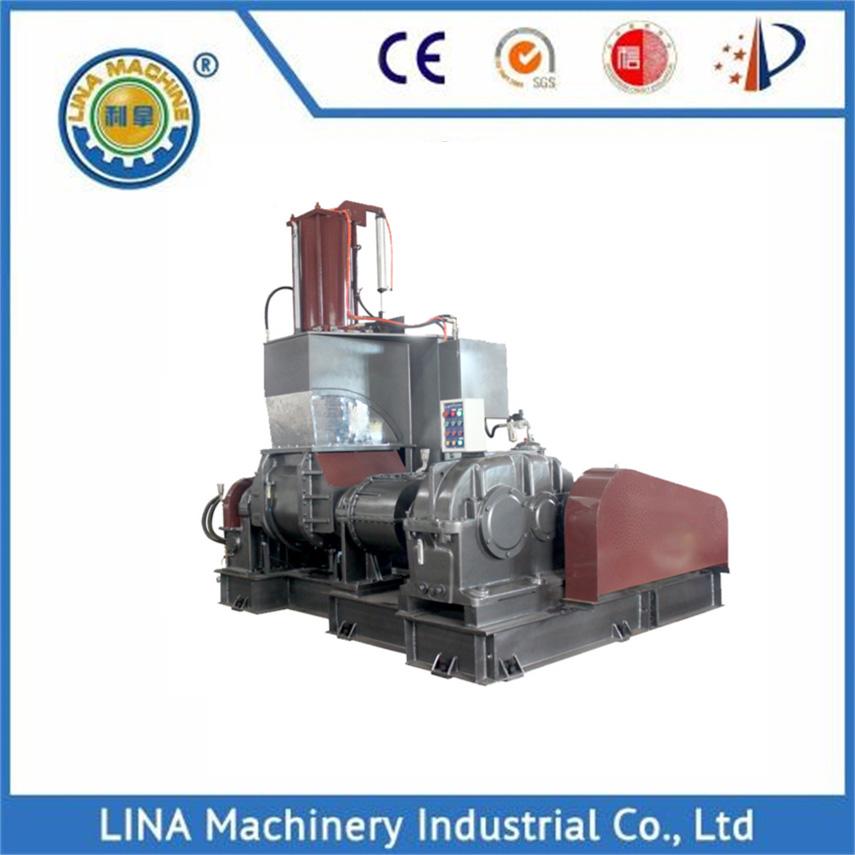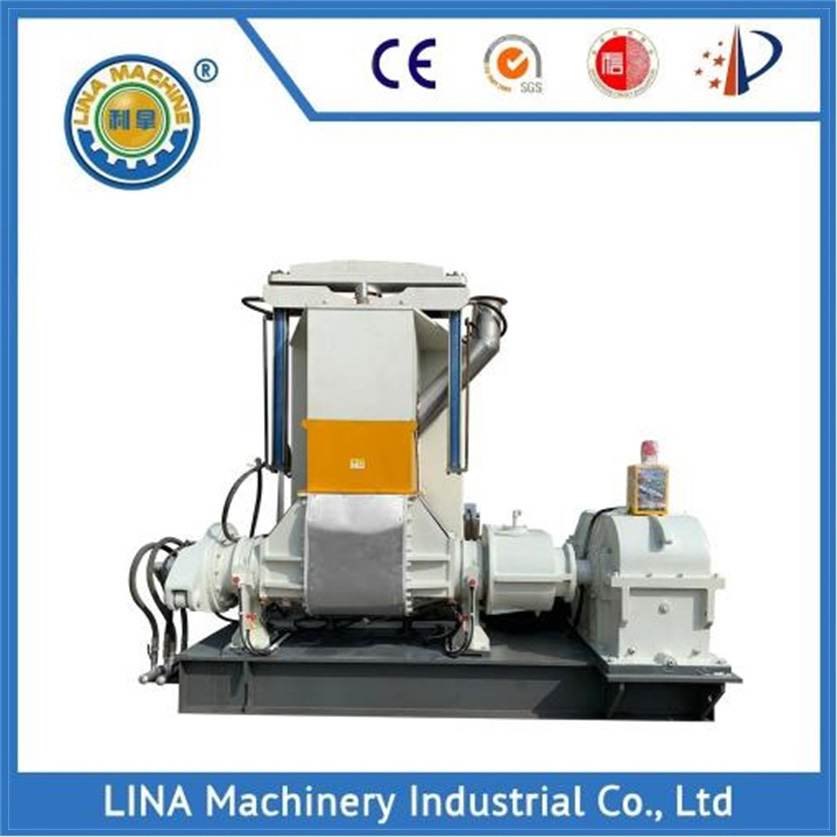




Mixer Design: Rubber mixers are designed to efficiently blend various raw materials, including natural rubber, synthetic rubber, fillers, and additives. They typically feature a robust frame, mixing chamber, rotor, and blades optimized for thorough dispersion and mixing.
Batch or Continuous Mixing: Rubber mixers can operate in batch or continuous modes. Batch mixers are suitable for small to medium-scale production runs, while continuous mixers offer high-volume, uninterrupted processing for large-scale operations.
Dispersion and Distribution: The primary function of rubber mixing equipment is to achieve dispersion and distribution of ingredients throughout the rubber compound. This is crucial for achieving desired properties such as tensile strength, elasticity, and durability.
Temperature Control: Many rubber mixing machines incorporate temperature control systems to optimize the mixing process. Precise temperature regulation helps maintain viscosity, facilitate mixing, and prevent premature vulcanization.
Automation and Control: Advanced rubber mixing equipment often includes automation features and control systems for precise monitoring and adjustment of mixing parameters such as speed, temperature, and time. This ensures consistent quality and reduces operator intervention.
Safety Features: Safety is paramount in rubber mixing operations. Equipment may incorporate features such as interlocking mechanisms, emergency stops, and safety guards to protect operators and prevent accidents.
Versatility and Customization: Rubber mixers are versatile and can be customized to suit specific production requirements. They can accommodate various formulations, batch sizes, and processing conditions, making them ideal for diverse applications across industries.
Energy Efficiency: Modern rubber mixing equipment is designed for energy efficiency, incorporating features such as optimized rotor designs, efficient motor systems, and insulation to minimize heat loss and reduce energy consumption.
Maintenance and Serviceability: Regular maintenance is essential to ensure the longevity and performance of rubber mixing equipment. Manufacturers often provide maintenance schedules, spare parts, and technical support to facilitate smooth operation and minimize downtime.
Quality Assurance and Compliance: Rubber mixing equipment is subject to stringent quality standards and regulatory requirements. Manufacturers adhere to industry standards and may offer certifications to demonstrate compliance with safety, environmental, and quality regulations.
In conclusion, rubber mixing equipment is essential for the production of high-quality rubber products. Its advanced features, customizable options, and focus on safety and efficiency make it indispensable in various industries, including automotive, aerospace, construction, and consumer goods. Choosing the right mixing equipment tailored to specific production needs is crucial for achieving optimal results and maintaining a competitive edge in the market.
Characteristics:
1. Comprehensive safety devices like ergonomics security devices, reverse braking devices, infrared sensor and 360 degrees emergency stop button etc.
2. LINA high quality carbon steel roller, which is treated by nitriding and the surface is plated hard chromium. And the medium hole of the roller ensures the cooling efficiency.
3. PLC intelligent soft control system is not only easily import or export but also accurately in control and measurement of mixing temperature and ratio.
4. Multifunctional options ensure easier operation and lower maintenance rate is designed for mass production to plasticizing, mixing and performing, Heating system, cooling system or double functions system are available to meet the mixing requirements of a variety of materials and improve flow production efficiency.





20 Liters Rubber Mixing Equipment
This Rubber Mixing Equipment is not only able to knead rubber and plastic materials with high-viscosity, but also semi-solids with low viscosity, a variety of elastomers, ceramic powder and a wide ran
TAG: Rubber Mixing Equipment
Description
Rubber mixing equipment plays a crucial role in the manufacturing process of rubber products, ensuring uniformity, consistency, and quality. Mixer Design: Rubber mixers are designed to efficiently blend various raw materials, including natural rubber, synthetic rubber, fillers, and additives. They typically feature a robust frame, mixing chamber, rotor, and blades optimized for thorough dispersion and mixing.
Batch or Continuous Mixing: Rubber mixers can operate in batch or continuous modes. Batch mixers are suitable for small to medium-scale production runs, while continuous mixers offer high-volume, uninterrupted processing for large-scale operations.
Dispersion and Distribution: The primary function of rubber mixing equipment is to achieve dispersion and distribution of ingredients throughout the rubber compound. This is crucial for achieving desired properties such as tensile strength, elasticity, and durability.
Temperature Control: Many rubber mixing machines incorporate temperature control systems to optimize the mixing process. Precise temperature regulation helps maintain viscosity, facilitate mixing, and prevent premature vulcanization.
Automation and Control: Advanced rubber mixing equipment often includes automation features and control systems for precise monitoring and adjustment of mixing parameters such as speed, temperature, and time. This ensures consistent quality and reduces operator intervention.
Safety Features: Safety is paramount in rubber mixing operations. Equipment may incorporate features such as interlocking mechanisms, emergency stops, and safety guards to protect operators and prevent accidents.
Versatility and Customization: Rubber mixers are versatile and can be customized to suit specific production requirements. They can accommodate various formulations, batch sizes, and processing conditions, making them ideal for diverse applications across industries.
Energy Efficiency: Modern rubber mixing equipment is designed for energy efficiency, incorporating features such as optimized rotor designs, efficient motor systems, and insulation to minimize heat loss and reduce energy consumption.
Maintenance and Serviceability: Regular maintenance is essential to ensure the longevity and performance of rubber mixing equipment. Manufacturers often provide maintenance schedules, spare parts, and technical support to facilitate smooth operation and minimize downtime.
Quality Assurance and Compliance: Rubber mixing equipment is subject to stringent quality standards and regulatory requirements. Manufacturers adhere to industry standards and may offer certifications to demonstrate compliance with safety, environmental, and quality regulations.
In conclusion, rubber mixing equipment is essential for the production of high-quality rubber products. Its advanced features, customizable options, and focus on safety and efficiency make it indispensable in various industries, including automotive, aerospace, construction, and consumer goods. Choosing the right mixing equipment tailored to specific production needs is crucial for achieving optimal results and maintaining a competitive edge in the market.
Characteristics:
1. Comprehensive safety devices like ergonomics security devices, reverse braking devices, infrared sensor and 360 degrees emergency stop button etc.
2. LINA high quality carbon steel roller, which is treated by nitriding and the surface is plated hard chromium. And the medium hole of the roller ensures the cooling efficiency.
3. PLC intelligent soft control system is not only easily import or export but also accurately in control and measurement of mixing temperature and ratio.
4. Multifunctional options ensure easier operation and lower maintenance rate is designed for mass production to plasticizing, mixing and performing, Heating system, cooling system or double functions system are available to meet the mixing requirements of a variety of materials and improve flow production efficiency.
|
Item |
Specification |
Remarks |
| Type |
Mass production type |
|
|
Mixing Capacity |
20 liters |
|
|
Production Yield |
20-35 KG per time |
Subject to the proportion of material and dispersion requirements. |
|
Main Motor Power |
37 KW |
|
|
Flipping Method |
Hydraulic type |
|
|
Flipping Angle |
110° |
|
|
Temperature Control |
Heating or/and cooling |
Electric/oil/steam heating and circulating water cooling. |
|
Weight |
About 4500 KG |
|
|
Dimensions |
About 2500*1450*2450 mm |
|





